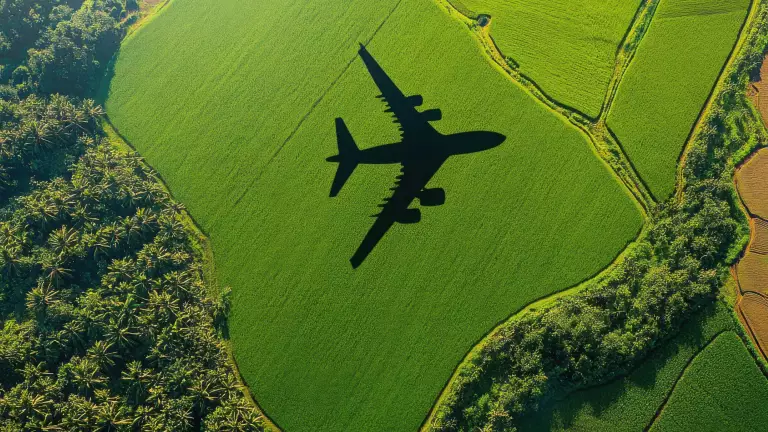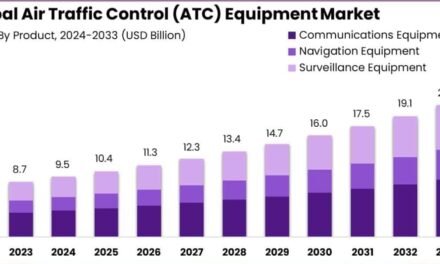The aviation industry is guided by a range of international regulations and agreements aimed at promoting green aviation initiatives. These frameworks are designed to mitigate the environmental impact of air travel, align global aviation practices with climate goals, and drive innovation in sustainable technologies. Here are the key regulations and agreements:
1. ICAO (International Civil Aviation Organization) Standards and Agreements
1.1 Carbon Offsetting and Reduction Scheme for International Aviation (CORSIA)
- Overview:
- A market-based mechanism established by ICAO to limit CO₂ emissions from international flights.
- Aims to achieve carbon-neutral growth from 2020 levels by requiring airlines to offset emissions above the baseline.
- Implementation:
- Phased approach:
- Voluntary participation from 2021–2026.
- Mandatory from 2027 for all countries, except a few exempted developing nations.
- Phased approach:
- Impact:
- Encourages investment in carbon offset projects and drives the adoption of sustainable practices.
1.2 ICAO Annex 16 – Environmental Protection
- Parts:
- Part III: Aircraft Engine Emissions Standards.
- Part IV: CO₂ emissions standards for new aircraft types.
- Impact:
- Sets stringent emissions limits for new and in-production aircraft, encouraging manufacturers to develop cleaner technologies.
1.3 Long-Term Aspirational Goal (LTAG)
- Adopted in 2022:
- ICAO’s commitment to achieving net-zero CO₂ emissions by 2050.
- Strategies:
- Sustainable Aviation Fuels (SAFs), operational efficiencies, and advanced technologies.
2. European Union Regulations
2.1 EU Emissions Trading System (ETS)
- Overview:
- Aviation is included in the EU ETS, requiring airlines operating within the European Economic Area (EEA) to buy emissions allowances.
- Impact:
- Caps CO₂ emissions and incentivizes airlines to adopt more efficient aircraft and alternative fuels.
- Future Integration:
- Expected alignment with ICAO’s CORSIA to avoid overlapping regulations.
2.2 ReFuelEU Aviation
- Overview:
- Mandates increasing use of Sustainable Aviation Fuels (SAFs) in EU airports.
- Targets:
- 2% SAF by 2025, increasing to 63% by 2050.
- Impact:
- Accelerates the development, production, and adoption of SAFs.
2.3 European Green Deal
- Overview:
- A broad EU strategy to make Europe the first climate-neutral continent by 2050.
- Aviation Focus:
- Promotes cleaner air travel through stricter emissions regulations, green technologies, and enhanced air traffic management.
3. United Nations Framework Convention on Climate Change (UNFCCC)
3.1 Paris Agreement
- Overview:
- Sets global climate goals to limit temperature rise to well below 2°C, with efforts to limit it to 1.5°C.
- Impact on Aviation:
- National climate strategies (e.g., Nationally Determined Contributions) often include measures to decarbonize aviation.
- Encourages alignment with global efforts like CORSIA and the promotion of SAFs.
4. National and Regional Programs
4.1 United States
- Sustainable Aviation Fuel (SAF) Grand Challenge:
- Aims to produce 3 billion gallons of SAF per year by 2030 and meet 100% of aviation fuel demand with SAF by 2050.
- Clean Skies for Tomorrow Coalition:
- A U.S.-led initiative to establish supply chains for SAF.
4.2 Asia-Pacific
- Singapore:
- Focus on SAF adoption and partnerships with industry leaders to establish green aviation hubs.
- Japan:
- Green Innovation Fund for SAF and hydrogen-powered aviation.
4.3 UK Jet Zero Strategy
- Overview:
- A roadmap to achieve net-zero aviation by 2050, emphasizing SAF production, zero-emission aircraft, and operational efficiencies.
5. Air Traffic Management (ATM) Agreements
5.1 Single European Sky (SES)
- Overview:
- A European initiative to optimize airspace management and reduce fuel burn through shorter flight routes.
- Impact:
- Enhances fuel efficiency, reduces delays, and lowers CO₂ emissions.
5.2 NextGen (United States)
- Overview:
- Modernization of U.S. air traffic management systems to enable more direct flight paths and improve operational efficiency.
- Impact:
- Significant reductions in fuel consumption and associated emissions.
5.3 SESAR (Single European Sky ATM Research)
- Overview:
- A research program to develop advanced ATM technologies and processes.
- Impact:
- Integrates sustainable airspace management across Europe.
6. Industry Commitments and Standards
6.1 International Air Transport Association (IATA)
- Net-Zero Goal:
- IATA’s commitment to achieving net-zero carbon emissions by 2050.
- Strategies:
- Expanding SAF usage, operational improvements, and offset mechanisms.
6.2 Airlines and Airports
- Carbon-Neutral Operations:
- Many airlines and airports are committing to carbon-neutral or net-zero goals, often supported by offsets, SAF, and electrification.
- Examples:
- British Airways, Delta Airlines, and Lufthansa are investing in SAFs and carbon capture technologies.
6.3 ASTM International Standards
- Role:
- Certification of SAFs and new propulsion technologies.
- Impact:
- Ensures safety and compatibility with existing aircraft and infrastructure.
7. Sustainable Development Goals (SDGs)
- Overview:
- Aviation aligns with the United Nations SDGs, particularly:
- SDG 7: Affordable and clean energy.
- SDG 9: Industry, innovation, and infrastructure.
- SDG 13: Climate action.
- Aviation aligns with the United Nations SDGs, particularly:
- Impact:
- Promotes investments in clean energy and sustainable technologies.
8. Key Challenges in Compliance
- Cost of Implementation:
- Green aviation initiatives often involve high upfront costs for airlines and infrastructure providers.
- Technological Readiness:
- Scaling technologies like SAF, electric propulsion, and hydrogen-powered aircraft.
- Global Coordination:
- Ensuring consistent adoption and enforcement of regulations across countries.
- Consumer Costs:
- Green initiatives could lead to higher ticket prices, affecting accessibility.
9. Future Outlook
- Increased Collaboration:
- Greater coordination between ICAO, national governments, and industry stakeholders.
- Incentives and Investments:
- Financial support for SAF production, green airport infrastructure, and zero-emission technologies.
- Innovation:
- Development of hydrogen-powered aircraft, electric aviation, and advanced air traffic systems.
Conclusion
International regulations and agreements are central to driving green aviation initiatives. Frameworks like CORSIA, EU ETS, and ICAO standards align the industry with global climate goals, while regional and national programs accelerate innovation and adoption of sustainable technologies. These efforts collectively push aviation toward a more sustainable future, though achieving net-zero emissions will require continued investment, technological breakthroughs, and global collaboration.
Hashtags
#GreenAviation #SustainableAirTravel #EcoFriendlyAviation #CleanFlightTech #FutureOfGreenAviation #AviationRegulations #SustainableFlightStandards #GlobalAviationRules #AviationEmissionStandards #ICAOStandards #CORSIAAgreement #ParisAgreementInAviation #CarbonNeutralAviation #FlightEmissionReduction #AviationCarbonOffsets #GreenFlightOperations #FlySustainably













